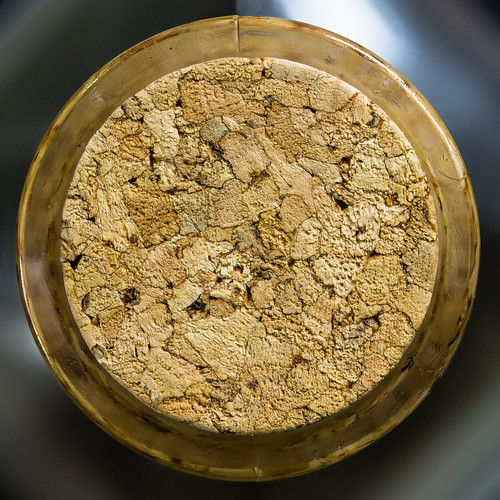Hortening the kid survey. Future possibilities to evaluate PCMH patient experiences, and to enhance present measures for doing PubMed ID:https://www.ncbi.nlm.nih.gov/pubmed/11225759 so, stay essential towards assessing whether or not the PCMH translates into improvements for individuals.Perform on the project described within this article was supported by a grant from the Commonwealth Fund. We thank Melinda Abrams for her guidance. The views presented here are those of your authors and not necessarily these of your Commonwealth Fund, or their directors, officers, or staff. We thank Janet Holzman for her enable in delivering information related to the PCMH recognition system.Healthcare ofJudy H. Ng and Sarah Hudson Scholle conceived and developed the study, oversaw information evaluation, interpreted the results, and wrote the paper; Sarah Hudson Scholle applied for study funding; Erika Henry and Peichang Shi analyzed the information; Erika Henry and Tyler Oberlander offered further interpretation of benefits, produced graphs, and edited sections from the paper. Conflicts of InterestThe authors declare no conflict of interest, apart from employment by the National Committee for High-quality Assurance, which accepts data in the CAHPS PCMH Survey in its PCMH recognition plan.
Health Solutions Analysis published by Wiley Periodicals, Inc. on behalf of Health Investigation and Educational Trust DOI.How Financial and Reputational Incentives Is often Made use  of to improve Health-related CareMartin Roland and R. Adams DudleyObjectives. Narrative review of the influence of payforperformance (PP) and public reporting (PR) on well being care outcomes, which includes spillover effects and impact on disparities.
of to improve Health-related CareMartin Roland and R. Adams DudleyObjectives. Narrative review of the influence of payforperformance (PP) and public reporting (PR) on well being care outcomes, which includes spillover effects and impact on disparities.  Principal Findings. The influence of PP and PR is dependent on the underlying payment method (feeforservice, salary, capitation) into which these schemes are introduced. Each possess the potential to enhance care, but they may also have substantial unintended consequences. Evidence in the behavioral economics literature suggests that person physicians will differ in how they respond to incentives. We also discuss troubles to become viewed as when which includes patientreported outcome measures (PROMs) or patientreported encounter measures into PP and PR schemes. Conclusion. We supply guidance to payers and policy makers on the style of PP and PR programs so as to maximize their added benefits and minimize their unintended consequences. These consist of involving clinicians inside the design of the program, taking into account the payment method into which new incentives are introduced, designing the structure of reward programs to maximize the likelihood of intended outcomes and reduce the likelihood of unintended consequences, designing schemes that lessen the risk of rising TCS 401 disparities, delivering stability of incentives over some years, and such as outcomes which might be relevant to patients’ priorities. Additionally, because of the limitations of PR and PP as powerful interventions in their very own correct, it really is vital that they’re combined with other policies and interventions intended to improve good quality to maximize their probably influence. Essential Words. Incentives in well being care, high-quality improvement, report cards, high quality of careThere has been substantially policy over the last decade about redesigning well being care payment approaches to create alignment amongst the objectives ofThis is definitely an open access report beneath the terms of your Creative Commons EL-102 custom synthesis Attribution License, which permits use, distribution and reproduction in any medium, supplied the original perform is appropriately cited.Economic and Reputational.Hortening the kid survey. Future possibilities to evaluate PCMH patient experiences, and to enhance present measures for performing PubMed ID:https://www.ncbi.nlm.nih.gov/pubmed/11225759 so, remain essential towards assessing irrespective of whether the PCMH translates into improvements for patients.Perform on the project described within this article was supported by a grant in the Commonwealth Fund. We thank Melinda Abrams for her guidance. The views presented listed below are these in the authors and not necessarily those with the Commonwealth Fund, or their directors, officers, or employees. We thank Janet Holzman for her help in delivering information and facts related to the PCMH recognition program.Healthcare ofJudy H. Ng and Sarah Hudson Scholle conceived and created the study, oversaw information analysis, interpreted the results, and wrote the paper; Sarah Hudson Scholle applied for study funding; Erika Henry and Peichang Shi analyzed the data; Erika Henry and Tyler Oberlander offered further interpretation of benefits, produced graphs, and edited sections with the paper. Conflicts of InterestThe authors declare no conflict of interest, besides employment by the National Committee for High quality Assurance, which accepts data from the CAHPS PCMH Survey in its PCMH recognition system.
Principal Findings. The influence of PP and PR is dependent on the underlying payment method (feeforservice, salary, capitation) into which these schemes are introduced. Each possess the potential to enhance care, but they may also have substantial unintended consequences. Evidence in the behavioral economics literature suggests that person physicians will differ in how they respond to incentives. We also discuss troubles to become viewed as when which includes patientreported outcome measures (PROMs) or patientreported encounter measures into PP and PR schemes. Conclusion. We supply guidance to payers and policy makers on the style of PP and PR programs so as to maximize their added benefits and minimize their unintended consequences. These consist of involving clinicians inside the design of the program, taking into account the payment method into which new incentives are introduced, designing the structure of reward programs to maximize the likelihood of intended outcomes and reduce the likelihood of unintended consequences, designing schemes that lessen the risk of rising TCS 401 disparities, delivering stability of incentives over some years, and such as outcomes which might be relevant to patients’ priorities. Additionally, because of the limitations of PR and PP as powerful interventions in their very own correct, it really is vital that they’re combined with other policies and interventions intended to improve good quality to maximize their probably influence. Essential Words. Incentives in well being care, high-quality improvement, report cards, high quality of careThere has been substantially policy over the last decade about redesigning well being care payment approaches to create alignment amongst the objectives ofThis is definitely an open access report beneath the terms of your Creative Commons EL-102 custom synthesis Attribution License, which permits use, distribution and reproduction in any medium, supplied the original perform is appropriately cited.Economic and Reputational.Hortening the kid survey. Future possibilities to evaluate PCMH patient experiences, and to enhance present measures for performing PubMed ID:https://www.ncbi.nlm.nih.gov/pubmed/11225759 so, remain essential towards assessing irrespective of whether the PCMH translates into improvements for patients.Perform on the project described within this article was supported by a grant in the Commonwealth Fund. We thank Melinda Abrams for her guidance. The views presented listed below are these in the authors and not necessarily those with the Commonwealth Fund, or their directors, officers, or employees. We thank Janet Holzman for her help in delivering information and facts related to the PCMH recognition program.Healthcare ofJudy H. Ng and Sarah Hudson Scholle conceived and created the study, oversaw information analysis, interpreted the results, and wrote the paper; Sarah Hudson Scholle applied for study funding; Erika Henry and Peichang Shi analyzed the data; Erika Henry and Tyler Oberlander offered further interpretation of benefits, produced graphs, and edited sections with the paper. Conflicts of InterestThe authors declare no conflict of interest, besides employment by the National Committee for High quality Assurance, which accepts data from the CAHPS PCMH Survey in its PCMH recognition system.
Overall health Solutions Investigation published by Wiley Periodicals, Inc. on behalf of Overall health Analysis and Educational Trust DOI.How Monetary and Reputational Incentives Might be Used to enhance Healthcare CareMartin Roland and R. Adams DudleyObjectives. Narrative overview with the effect of payforperformance (PP) and public reporting (PR) on wellness care outcomes, including spillover effects and effect on disparities. Principal Findings. The impact of PP and PR is dependent around the underlying payment technique (feeforservice, salary, capitation) into which these schemes are introduced. Each have the prospective to enhance care, however they can also have substantial unintended consequences. Proof in the behavioral economics literature suggests that person physicians will vary in how they respond to incentives. We also go over problems to become viewed as when such as patientreported outcome measures (PROMs) or patientreported knowledge measures into PP and PR schemes. Conclusion. We give guidance to payers and policy makers around the design of PP and PR applications so as to maximize their added benefits and decrease their unintended consequences. These include involving clinicians inside the style of your program, taking into account the payment method into which new incentives are introduced, designing the structure of reward programs to maximize the likelihood of intended outcomes and decrease the likelihood of unintended consequences, designing schemes that decrease the threat of growing disparities, supplying stability of incentives more than some years, and which includes outcomes which might be relevant to patients’ priorities. In addition, due to the limitations of PR and PP as helpful interventions in their own appropriate, it truly is essential that they’re combined with other policies and interventions intended to improve quality to maximize their likely impact. Essential Words. Incentives in wellness care, high-quality improvement, report cards, top quality of careThere has been substantially policy more than the last decade about redesigning health care payment strategies to make alignment among the targets ofThis is definitely an open access post beneath the terms of your Creative Commons Attribution License, which permits use, distribution and reproduction in any medium, offered the original work is correctly cited.Monetary and Reputational.
